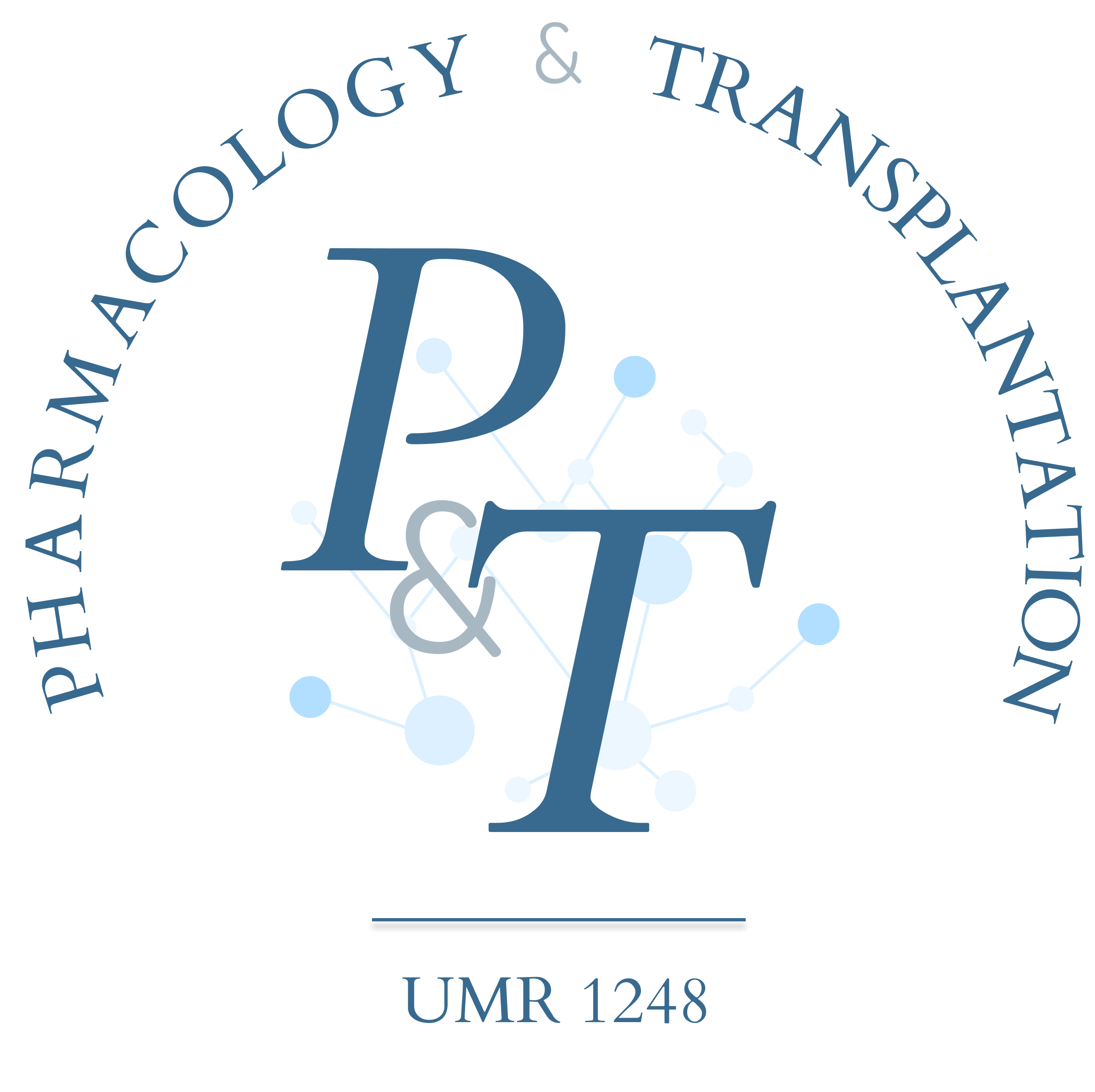Albumin modifications as early biomarkers of chronic liver diseases
Contact - Information
UMR-1248 INSERM
CBRS – Université de Limoges
2, rue du Pr Bernard Descottes
87000 Limoges
Deadline: nd – OPEN
Documents:
- Resume
- Cover Letter
- Contact for recommandation letter(s)
Funding Source:
–
M. Baldassarre et al., Sci. Rep., vol. 6, p. 35987, 26 2016. DOI: 10.1038/srep35987
S. Das et al., Hepatol. Baltim. Md, vol. 65, no. 2, pp. 631–646, 2017. DOI: 10.1002/hep.28897
M. Domenicali et al., Hepatology, vol. 60, no. 6, pp. 1851–1860, Dec. 2014. DOI: 10.1002/hep.27322
R. Jalan et al., Hepatol. Baltim. Md, vol. 50, no. 2, pp. 555–564, Aug. 2009. DOI: 10.1002/hep.22913
A. Kawakami et al., FEBS J., vol. 273, no. 14, pp. 3346–3357, Jul. 2006. DOI: 10.1111/j.1742-4658.2006.05341.x
M. Naldi et al., J. Pharm. Biomed. Anal., vol. 112, pp. 169–175, Aug. 2015. DOI: 10.1016/j.jpba.2014.12.001
K. Oettl et al., J. Hepatol., vol. 59, no. 5, pp. 978–983, Nov. 2013. DOI: 10.1016/j.jhep.2013.06.013
R. E. Stauber et al., Ther. Apher. Dial., vol. 18, no. 1, pp. 74–78, Feb. 2014. DOI: 10.1111/1744-9987.12024
A. J. Muir, Clin. Ther., vol. 37, no. 8, pp. 1822–1836, Aug. 2015. DOI: 10.1016/j.clinthera.2015.05.507
E. A. Tsochatzis et al., “Liver cirrhosis,” The Lancet, vol. 383, no. 9930, pp. 1749–1761, May 2014. DOI: 10.1016/S0140-6736(14)60121-5
G. Fanali et al Mol. Aspects Med., vol. 33, no. 3, pp. 209–290, 2012. DOI: 10.1016/j.mam.2011.12.002
R. Spinella et al, Hepatol. Int., vol. 10, no. 1, pp. 124–132, Jan. 2016. DOI: 10.1007/s12072-015-9665-6
PhD Project
CONTEXT and BACKGROUND
More than 800 million people suffer from chronic liver disease (CLD) with approximately 2 million deaths per year. The progression of CLD, could be asymptomatic until the appearance of fibrosis, cirrhosis and sometimes hepatocellular carcinoma. The prevention and early diagnosis of liver disease is therefore a major public health issue.
Due to their lack of sensitivity and specificity, direct serum markers are now combined in « panel tests », sometimes assisted by algorithms (FibroMeter, FibroTest, FIBROSpect, Hepascore…) to help diagnose fibrosis or cirrhosis and assess the stage of liver damage. Other biomarkers, in particular molecules involved in the fibrosis process (protein-based biomarkers, microRNA or collagen-based biomarkers) have been the subject of numerous studies, but have not yet led to clinically exploitable biomarkers for the medium- or long-term monitoring of CLD. Non-invasive, sensitive and specific biomarkers for the early detection of liver dysfunction leading to advanced liver disease are therefore still awaited.
OUR WORK AND THE THESIS PROJECT
It has been shown that chemical and structural modifications leading to different isoforms of human serum albumin (HSA) could be used as biomarkers for advanced liver disease. Our work supports the hypothesis that the main changes in HSA occur in the early stages of cellular liver damage and could be predictive of future liver disease. These modifications can be revealed by the profile of isoforms in the patient’s serum, or even more efficiently by the binding capacities of HAS for different ligands with specific binding sites. On this basis, we have filed a patent application for the SEB (Serum enhanced binding) test.
More specifically, albumin undergoes several post-translational modifications including: acetylation, cysteinlation, homocysteinlation, glutathionlation, glycosylation, glycation, nitrosylation, nitration, phosphorylation and oxidation. Although oxidation can affect several residues such as methionine, lysine, arginine and proline, the oxidation of the Cys34 residue is the most studied. This modification has been characterized on the basis of the redox state of Cys34 as follows: (i) human mercaptalbumin (HMA), the reduced and most abundant form of HAS (70-80% of total SAH in healthy subjects); (ii) nonmercaptalbumin 1 (HNA1), a reversible oxidized form (20-30%) and (iii) nonmercaptalbumin 2 (HNA2), an irreversible (< 5%) oxidized albumin form.
The clinical relevance of detecting these modifications has recently been investigated in advanced liver disease. Significant reductions in HMA and concomitant increases in the isoforms HNA1 and HNA2 have been well documented in the end stages of liver injury. It has also been reported that a progressive increase in oxidized forms of HSA is detected in cirrhotic patients. In particular, circulating levels of HNA1 and HNA2 have increased in patients with decompensated cirrhosis and, to a greater extent, in those with acute chronic liver failure, a syndrome characterized by a very high short-term mortality rate.
The studies planned as part of this project will provide explanations of why HAS changes occur, when they occur during liver damage and in which pathology(ies) each change may occur.
The thesis work will aim to answer the following questions:
1. How early are the changes in HAS early?
2. Which structural or chemical modifications of HSA occur first and for which pathological conditions (i.e. alcoholic hepatitis, toxic origin, NASH…)?
3. Do these changes interfere with the ability of HAS to bind to some or all of its ligands, whether endogenous or exogenous?
4. Is the increased occupation of HAS binding sites by an excess of endogenous toxins (such as bilirubin) involved in the modification process?
CANDIDATE PROFILE:
The candidate must be familiar with analytical techniques such as LC-MS/MS and triple TOF. A first experience in animal experimentation is preferred. Skills in database management in accordance with French and European regulations concerning clinical studies are a bonus.
The student will be in charge of the analytical developments initially planned (miRNA122, CXCl10 and homodimeric HSA assay). He will also be strongly involved in animal experiments as well as in the identification analyses of the different isoforms of the SAH and SEB test. He will be trained to assist biostatisticians in basic statistical calculations first, then to become familiar with the mathematical models used to build algorithms (e.g. R software).









